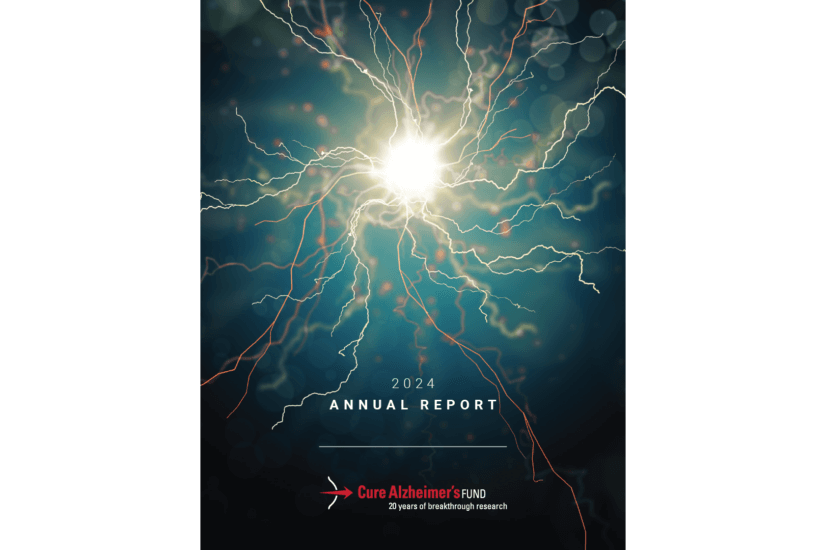Four novel genes that may significantly increase the risk of the most common form of late-onset Alzheimer’s have been identified by researchers at Massachusetts General Hospital and Harvard Medical School, as reported in the November 7th issue of American Journal of Human Genetics. The findings, part of a larger “Alzheimer’s Genome Project” (AGP) established three years ago to identify the full set of Alzheimer’s disease genetic risk factors, may lead to more aggressive therapeutic interventions to slow, stop or even reverse the effects of the disease. These new therapies would differ from current treatments that only address the symptoms of the disease.
Dr. Rudolph Tanzi, chairman of the Cure Alzheimer’s Fund Research Consortium and the Joseph P. and Rose F. Kennedy Professor of Neurology at Harvard Medical School, completed the largest family-based genome-wide association screen conducted to date. More than 400 families affected by Alzheimer’s disease were screened to determine genetic variants associated with the inheritance of Alzheimer’s. The four genes discovered in the family study are described in the article.
Technological advances are improving the understanding of the genetic mechanism that governs Alzheimer’s disease and are making it feasible to identify the complete set of genes influencing risk for Alzheimer’s disease, Dr. Tanzi said.
In addition to the genome-wide association screen, Dr. Tanzi and Dr. Lars Bertram of Harvard Medical School have been analyzing Alzheimer’s genetics literature to determine which of the hundreds of proposed Alzheimer’s candidate genes are genuine disease genetic risk factors. These summarized findings, implicating 30 gene candidates, are updated regularly at http://AlzGene.org (a public Web site sponsored by the Cure Alzheimer’s Fund). Tanzi and Bertram highlighted 10 of the most interesting of these genes in the current
issue of Nature Reviews Neuroscience. Ultimately, the goal is to combine the results of the Alzheimer’s family-based genome-wide association screen with the bioinformatics results of AlzGene.org.
The combined efforts of the family-based genome-wide association screen and AlzGene.org studies have led to the identification of 70 genes containing variants that either confer risk for, or protect against, Alzheimer’s, making up the most comprehensive genetic map of the disease.
“This project is the most complete and comprehensive search for the genes that cause Alzheimer’s disease published to date,” Tanzi said. “Our hope is to use this new information to not only better diagnose and someday predict risk for Alzheimer’s but to also learn from these genes the biological causes of Alzheimer’s. The knowledge gained from understanding the Alzheimer’s-associated defects in these genes will almost certainly accelerate the development of novel therapeutics and hopefully lead to a potential cure for this devastating disease.”
The current understanding of the causes and pathological progression of Alzheimer’s disease have been made possible by studies of four Alzheimer’s genes discovered between 1987 and 1995, three of which were co-discovered by Tanzi. Since these genes account for only 30 percent of the genetic basis of Alzheimer’s disease, three years ago Cure Alzheimer’s Fund initiated the Alzheimer’s Genome Project aimed at determining the remaining 70 percent of the genetic basis of Alzheimer’s disease. Taking advantage of major technological and analytical breakthroughs in human genetic studies, the project was able to reach this milestone with a limited budget, led by a contribution of $3 million from Cure Alzheimer’s Fund.
“We are on the cusp of a rare ‘science moment’ that could alter the way we diagnose, treat and prevent Alzheimer’s disease,” said Tanzi. “Ultimately, the combined results of the family-based genome-wide screen and AlzGene.org will allow for the reliable prediction of Alzheimer’s disease while also guiding the development of therapies.”
Alzheimer’s disease is the most common cause of dementia in the elderly and a burgeoning unmet medical need that only will worsen as individuals continue to live longer. The Alzheimer’s Association estimates that as many as 5.2 million Americans are living with Alzheimer’s disease, including between 200,000 and 500,000 people under age 65 with young-onset Alzheimer’s disease or other dementias. Experts predict that, by 2010, nearly a half million new cases of Alzheimer’s disease will occur each year; and by 2050, nearly a million new cases will occur annually.
Cure Alzheimer’s Fund has no endowment and passes funds raised directly to selected research as determined by the Cure Alzheimer’s Research Consortium. The Foundation has no financial or intellectual property interest in the research funded, and will make known the results of all funded research as soon as possible. At a time when the federal government investment for Alzheimer’s research and education is decreasing, Cure Alzheimer’s Fund has raised more than $10 million, investing all of it directly into research.
Cure Alzheimer’s Fund™ is a 501c3 public charity established to fund targeted research with the highest probability of slowing, stopping or reversing Alzheimer’s disease. For more information, please visit http://www.curealzfund.org.
-30-







